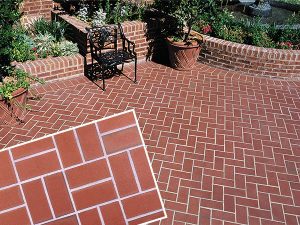Why Brick Comes Out on Top
In today’s construction landscape, a variety of cladding materials are vying for attention. However, when it comes to durability, aesthetic appeal, and long-term value, brick consistently outperforms its competitors. This article explores why brick stands head and shoulders above other popular options such as stucco, fiber cement, and vinyl, debunking common misconceptions about cost and highlighting the enduring benefits of building with brick.
Build Smarter, Build Stronger, Build with Brick
Brick is not just a building material; it’s an investment in the future. Unlike fiber cement, vinyl siding, and other synthetic materials, brick requires virtually no upkeep. Its timeless beauty not only adds curb appeal but also pays for itself over time. With energy savings, higher resale values, and lower insurance costs, brick offers rewards that last a lifetime.
Unmatched Quality and Durability
When it comes to quality and durability, brick stands alone. Its strength and resilience provide superior protection against the elements, natural energy efficiency, and exceptional longevity. It’s no wonder that competitors shy away from direct comparison. Brick’s reputation as a building material that can withstand the test of time is well-deserved.
Brick vs. Fiber Cement: A Reality Check
At first glance, fiber cement siding might seem like a viable alternative to brick, but it falls short in several critical areas. Unlike brick, fiber cement requires regular maintenance, including joint inspections and repairs. Despite claims of durability, fiber cement’s susceptibility to damage from mold, mildew, and impact exposes its weaknesses. Furthermore, fiber cement’s fire resistance is limited by its wood pulp content, making it less reliable than brick in fire-prone areas.
Brick: A Lifetime Investment
Brick’s initial cost might be higher than fiber cement, but its durability and minimal maintenance make it the more cost-effective option over time. Brick’s strength and resistance to weather, pests, and fire reduce the need for repairs and replacements, making it a smart long-term investment.
Elevate Your Home with Brick
Brick’s aesthetic appeal and structural integrity far surpass that of vinyl siding. Unlike vinyl, which is prone to fading, cracking, and warping, brick maintains its beauty and strength for centuries. Additionally, brick’s superior insulating properties contribute to significant energy savings, further enhancing its value as a cladding material.
Recyclability: Brick vs. Vinyl
When it comes to sustainability, brick outshines vinyl. Brick is 100% recyclable and can be reused in various ways, minimizing environmental impact. In contrast, vinyl’s recycling process is plagued by contamination and inefficiency, making brick the eco-friendly choice for cladding applications.
Commitment to Safety: Brick vs. Vinyl
In terms of safety, brick is the clear winner. Its non-combustible nature and strength provide a formidable barrier against harsh weather and fire hazards. Vinyl, on the other hand, is susceptible to melting and spreading flames, posing significant safety risks.
The EIFS Dilemma: Why Brick is Superior
EIFS (Exterior Insulation and Finish System), also known as synthetic stucco, may seem attractive due to its lightweight design, but it comes with hidden costs. Unlike brick, EIFS is prone to moisture intrusion, leading to mold growth and structural damage. Brick’s proven track record over thousands of years makes it a more reliable and low-maintenance choice.
Is Brick Worth the Investment?
Absolutely. Brick offers unparalleled durability, aesthetic appeal, and sustainability, making it a worthwhile investment for homeowners and builders alike. Its ability to reduce energy consumption, enhance exterior beauty, and minimize environmental impact ensures long-term benefits that far outweigh its initial cost.
Choosing the Right Brick for Your Project
Selecting the right type of brick depends on your aesthetic preferences, durability needs, and budget. Clay brick is a classic option known for its versatility and timeless appeal. Glazed brick adds elegance with its glossy finish, while thin brick offers a cost-effective way to achieve the look of solid brick without the weight.
Brick vs. Stucco: Cost and Longevity
When comparing brick to stucco, brick emerges as the more durable and cost-effective option. While stucco may require frequent repairs and replacements, brick’s long-lasting nature ensures minimal maintenance costs over the years. The higher resale value of brick homes further underscores its financial advantages.
Brick vs. EIFS: The Clear Choice
Brick’s unmatched durability and minimal maintenance make it a superior choice over EIFS. With its ability to resist fire, moisture, and pests, brick offers a reliable and long-lasting solution for both interior and exterior applications.
When it comes to cladding materials, brick stands out as the superior choice. Its combination of durability, beauty, and sustainability makes it the ultimate investment for anyone looking to build a lasting and valuable home.

